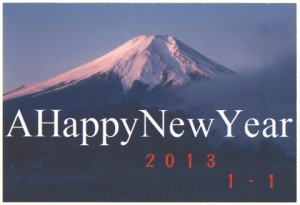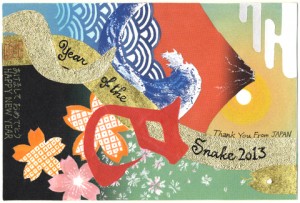
24 Jul, 2013
Japan Post postcard contest shows some traditions still surviving
09 July 2013, Universal Postal Union — Japan Post has announced the winners of a postcard-design competition, which put a twist on a New Year’s tradition and the UPU among the judges.

Nobuhiro Sato won the best photo card category (above) and thanked the world for their sympathy during the Japan earthquake of 2011. Fumiko Kinoshita, winner of the best handmade card, had Japanese aesthetics on her mind when creating it

Tradition
Some 1,400 people took part in the Japan-wide contest.
Delegates attending the Postal Operations Council in April and UPU staff in Berne selected the two best examples of the postcards, or nengajo, from the top 40 cards.
On January 1 each year, nengajo are sent to loved ones in a tradition dating back to the 11th century.
“This tradition demonstrates how many people still rely on the Post to send personal greetings to their loved ones, despite the growing popularity of electronic communications,” says Juliana Nel, UPU director of markets development.
“Other Posts could follow this example at the national level to encourage customers to use the postal service not only to communicate and build friendships, but also to generate income for their business,” she says.
Japan Post held the competition to encourage people to communicate through greeting cards and postcards. “E-mail might be used by some people, but you don’t put the same feeling in that as you do with a card,” says Emiko Hakozaki, assistant manager of Japan Post’s international business.
Busy day
January 1 is the busiest day of the year for Japan Post.
For those who thought that personal correspondence was dead, think again. This year alone, 1.8 billion cards were delivered on New Year’s Day in Japan. A person receives 53 cards on average, according to Hakozaki.
The Post relied on 120,000 people, 2,500 lorries and 29,000 mini-vehicles to ensure that the nengajo reached recipients on that day.
The Post also organizes a lottery where customers can purchase nengajopostcards with a serial number.
In the run-up to January 2013, the Post sold more than three billion New Year’s cards with lottery numbers. Each card costs about 50 JPY (0.60 USD).
The Post announces the lottery results at the end of January, says Hakozaki.



Liked this article? Share it!